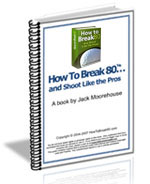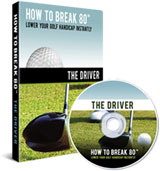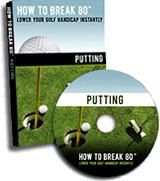
Secrets To Working The Ball By Jack Moorehouse Players who know how to shape their shots have a significant advantage scoring-wise over those who don't. Shaping your shots not only reduces scores and golf handicaps, it dramatically alters the way you play the game. So if you're serious about improving your game, you must learn how to shape your shots. But where do you start when it comes to learning how to shape shots. Initially, you should focus on learning to hit three types of shots—how to curve the ball left to right, how to curve the ball right to left, and how to hit the low punch shot. Golf Lesson #1: Hitting Left To Right Take your normal stance, move your front foot back a few inches, and open up your hips. You should be facing left of the target line. During the takeaway, swing the club parallel to the line of your foot. The out-to-in takeaway produces a top-of-the-swing position where the clubface points left of the target. If you follow your foot line with your swing, you’ll hit the ball with an open clubface. The keys to hitting a fade: * Pull your front foot back slightly* Open your stance * Hinge wrists at about waist high * Take a full shoulder turn * Swing the club parallel to foot line * Clear left hip (for right-handers) Hitting a fade seems simple enough, but be careful, as I've warned in my golf tips. If you generate too much sidespin, you’ll create a slice. Golf Lesson #2: Hitting Right To Left Take a normal square stance, then draw your back foot back a few inches, closing your stance and clubface. The clubface aims directly along the target line but it follows and in-to-out path, not the out-to-in path of a fade. Adopting a slightly stronger left-handed grip encourages a more active release of the hands. Keys to hitting a draw: * Adopt a closed stance
Golf Lesson #3: Hitting a Low Line Drive But this approach carries hidden dangers. Moving the ball too far back in your stance forces you to point the clubface/shoulders right of target, opens up the possibility of hitting a shank, and causes you to lunge at the ball from the top of your swing. If you fail to punch the ball correctly, you risk increasing backspin and trajectory. Here's a safer approach. Instead of moving the ball back, go down two clubs more than necessary and grip down on the club just above the shaft. If the situation requires a 9-iron but conditions are really windy or the pin is in a back position, drop down to a 7-iron and choke down on the club. Now take your normal set-up and swing. The two adjustments give you distance without the loft. Choking down shortens the swing arc, reducing clubhead speed. If that trajectory is too low for the shot, drop down one club and slide your hands halfway down the grip. Then take your normal swing. Dropping down to an 8-iron lengthens your swing arc, boosts clubhead speed, and increases trajectory. Understanding Swing Mechanics Jack Moorehouse is the author of the best-selling book "How To Break 80 And Shoot Like The Pros." He is NOT a golf pro, rather a working man that has helped thousands of golfers from all seven continents lower their handicap immediately. He has a free weekly newsletter with the latest golf tips, golf lessons and golf instruction.
|
|





